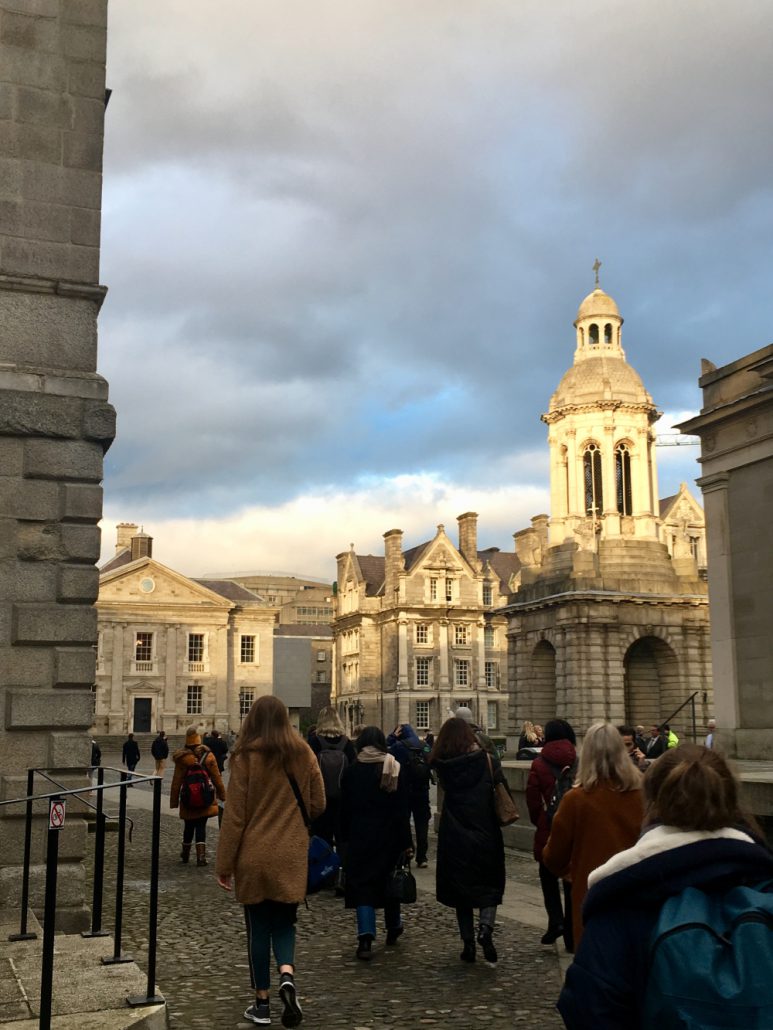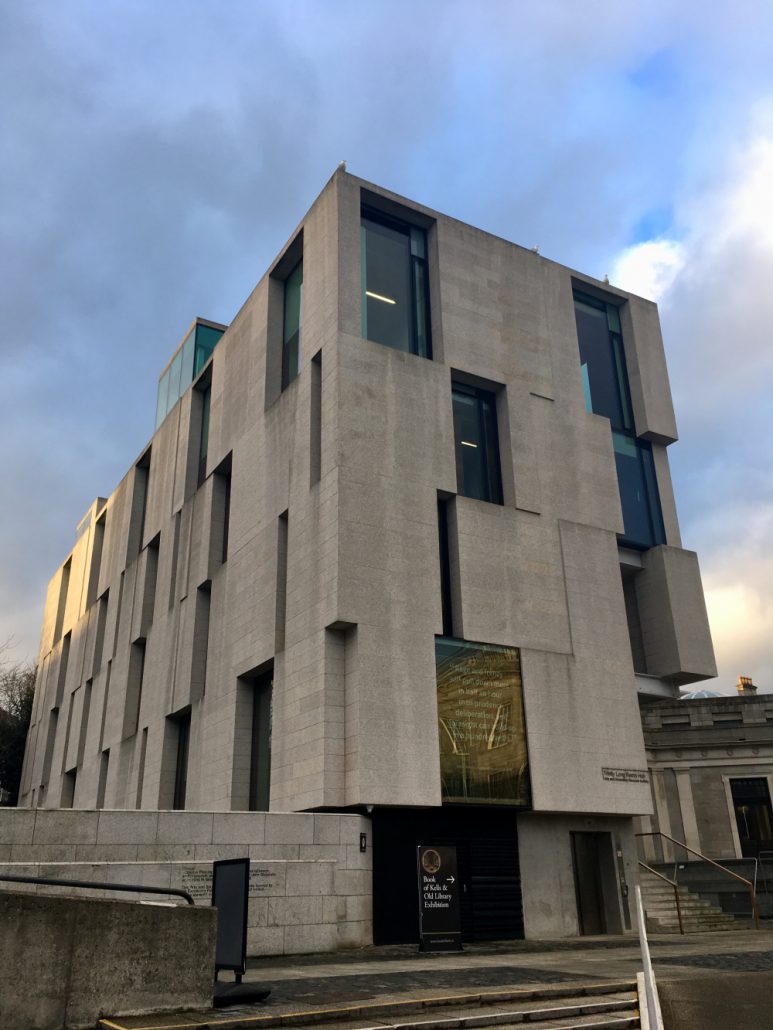BY ALEXIS HARMON
Hi, everyone! It’s been a few weeks now and I’m starting to feel like I actually know my way around campus. Since it was built literally 500 years ago and wasn’t intended to have so many students, the layout can be a bit confusing at times! However, the beauty of the campus more than makes up for it. In this post, I’ll show you some of the most famous spots on campus, as well as give you some tips on what places you should be aware of as a student.
The Historical Campus
First of all, there’s the famous entrance. The entire campus is enclosed, and the main entrance that all tourists pass through is this beautiful building with its graceful columns and imposing wooden door. There are numerous other entrances around the perimeter that allow for easier access to classes, but none compare to this one.

Main Entrance
Immediately, the iconic Campanile comes into view. Built in 1853, the 100-foot granite bell tower stands in the center of the historical campus and dominates the square. Beautiful as it is, be careful walking under it because campus lore says that if the bell rings while you walk under you’ll fail your exams.

The Campanile
After entering, on your left is the student union, several offices including the accommodation office, the old chapel, the Regent House, and the old dining hall. To your right are more offices and a building just for final exams.


Top: Regent House and old dining hall, built in the early 1700’s. Bottom: Dining hall again and office space
A few things to note:
- The student union sells discount transport tickets (known as the student Leap card), snacks and grocery basics (milk, bread, etc), basic school supplies, and even discounted tickets to events like music festivals.
- Although you might expect the chapel to be stunning, I’m told it’s actually quite basic. It’s not really a tourist attraction and is supposed to simply be a place of worship so be respectful.
- Most of the old campus buildings aren’t utilized for classes. Instead it’s mostly office space.
- The dining hall is a great place to grab cheap, convenient lunch in a beautiful setting. Most meals range from €5-9 which is inexpensive for Dublin and a lot of the food is pretty good. We’ll talk more about food options near campus in another post.
After lunch, I walked east on campus toward where most of the classes are. Something about the afternoon light in Dublin makes the stones glow gold so I had to take one last photo of the main square.


Top: Old campus gilded in the afternoon light (On the walk between campuses, you can see the old merging with the new, like this old building of offices by the new theater and modern sculpture). Bottom: Old and new mixed
The New Campus
The new campus isn’t nearly as pretty, but it’s where most of the action on campus takes place. All of my classes are in new buildings, which is typical. Here’s one of the prettiest modern buildings, a research center where lecture series are often held.

Trinity Long Room Hub
Most of my classes are in the Arts Building, a sprawling six story building where most of the humanities students hang out. There are dozens of classrooms and offices, comfy couches to hang out on, and a great coffee shop called Perch. My favorite place to work between classes is the top floor of the arts building. There are huge windows that face a busy street where you can watch all the people go by as you hurriedly try to finish your readings before your next class.
Between the arts and the STEM side of campus is a huge stretch of grass comprised of the rugby pitch and College Park. Students crowd the grass in good weather (which is about 55 degrees in their opinion). The long path between the two sides of campus is lined with trees. One of the most beautiful parts of studying abroad in spring is watching the campus come into bloom.

The path, lined with daffodils
So there you have it. Trinity’s campus is just as beautiful as you’ve been told. Now you just need to explore it yourself and find all its hidden gems!
Alexis Harmon studied abroad in Dublin, Ireland during Spring 2019: http://eap.ucop.edu/OurPrograms/ireland/Pages/immersion_ireland_universities.aspx



